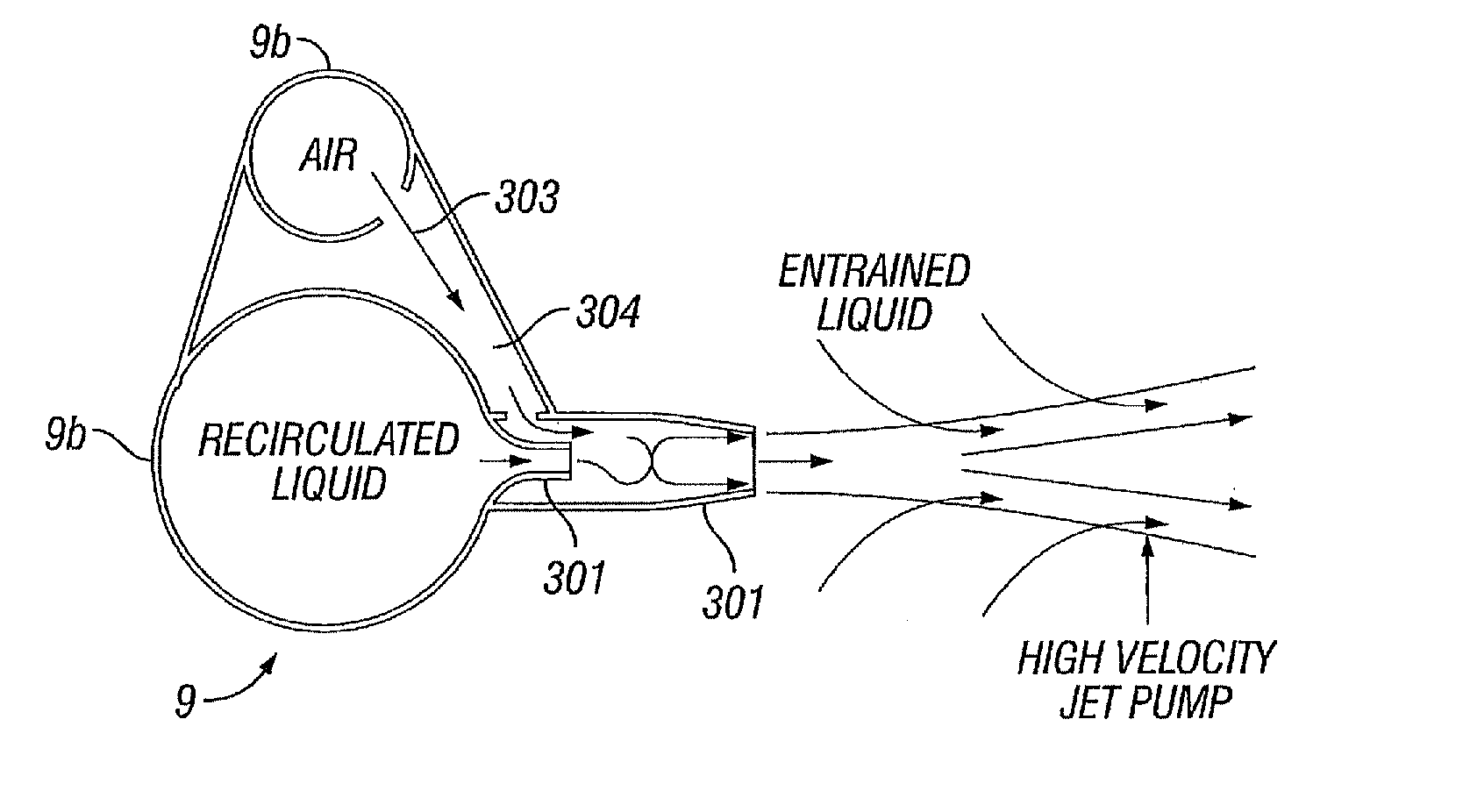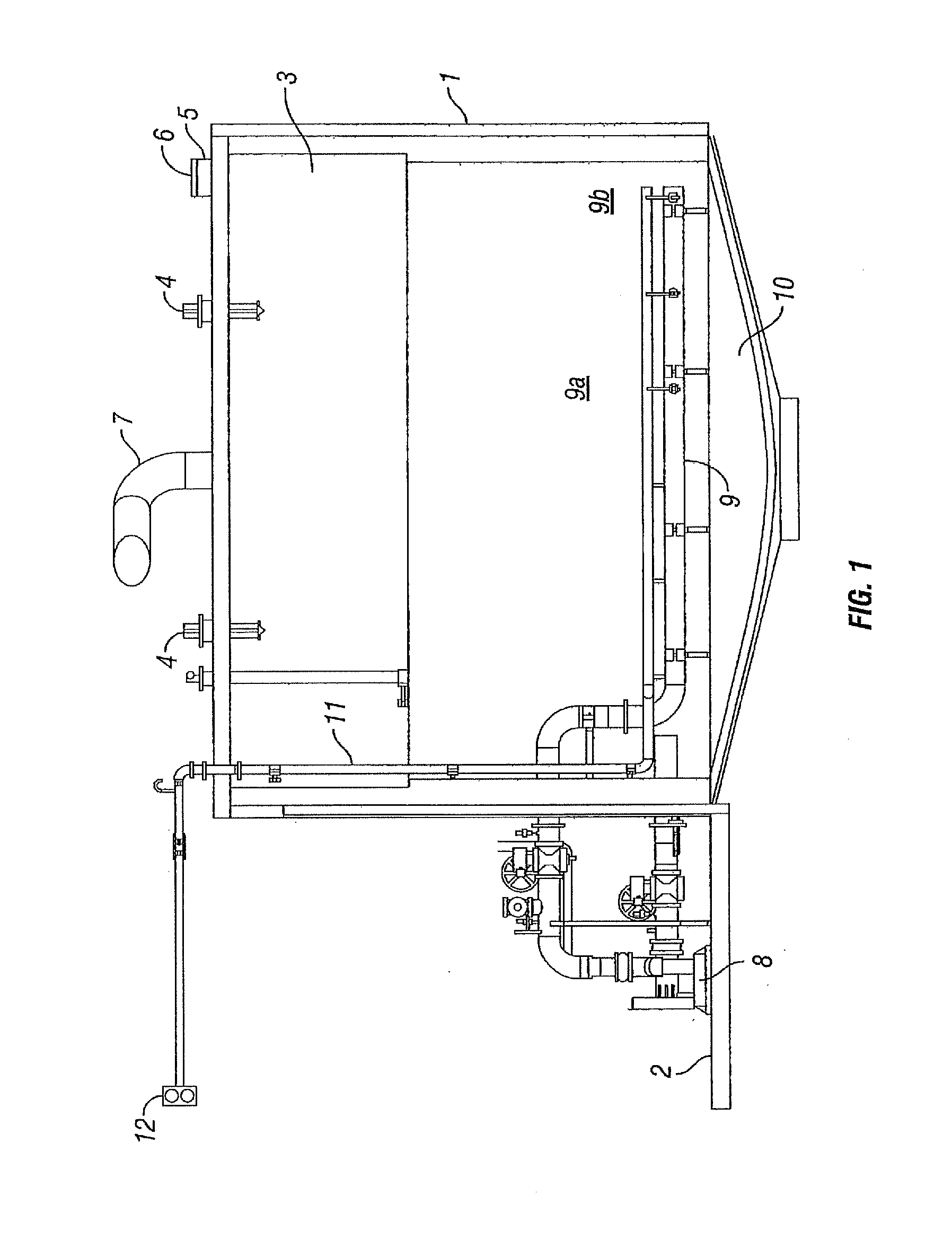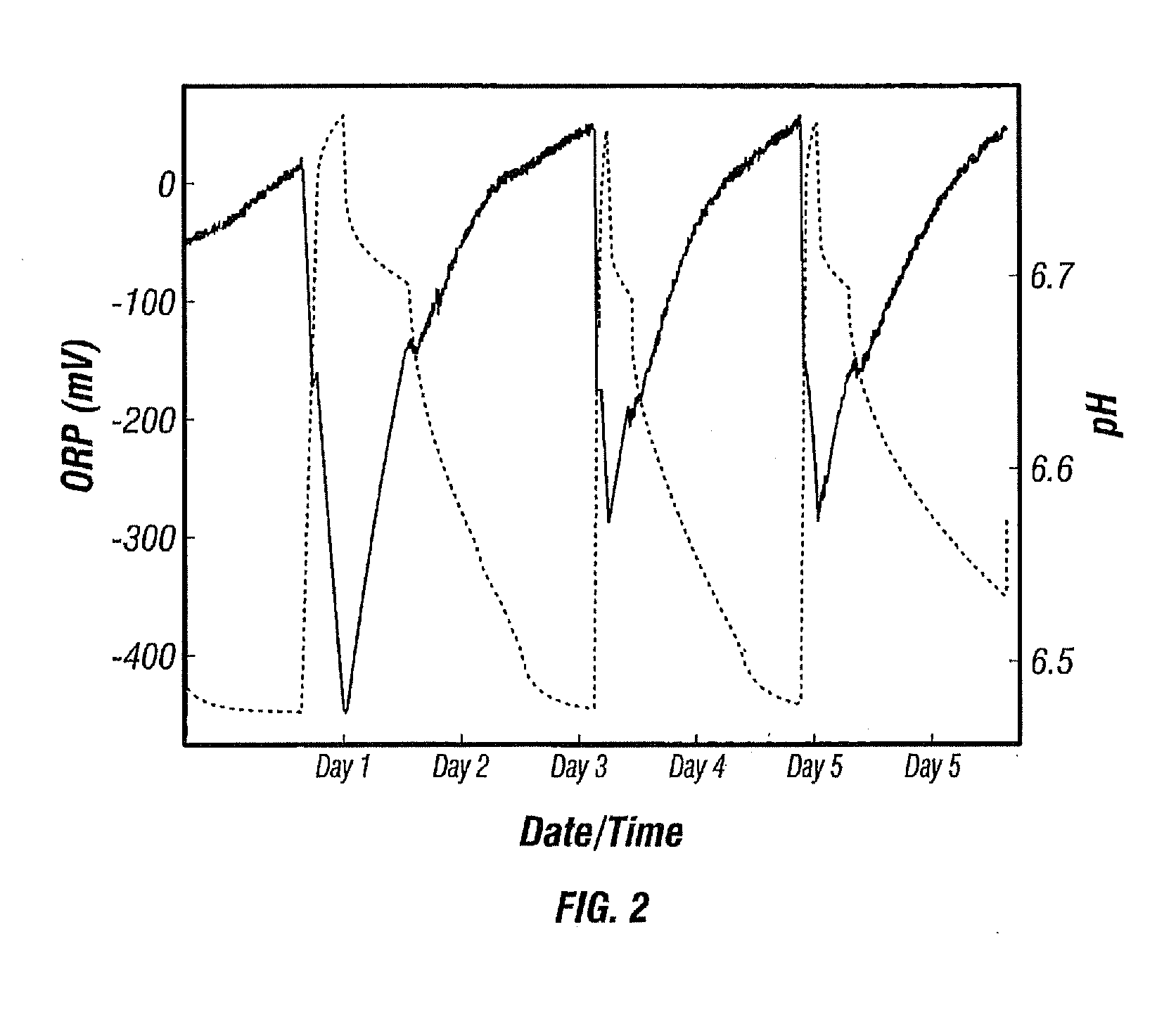Nitrification And Denitrification Of Digested Biosolids
a biosolids and thermophilic technology, applied in the direction of sustainable biological treatment, water/sewage treatment by oxidation, biological water/sewage treatment, etc., can solve the problems of sludge disposal still being problematic, posing a danger to human health, and many microorganisms human pathogenic nature, etc., to reduce the concentration of one or more digestions.
- Summary
- Abstract
- Description
- Claims
- Application Information
AI Technical Summary
Benefits of technology
Problems solved by technology
Method used
Image
Examples
Embodiment Construction
[0042]New processes and apparatus are provided for nitrification and denitrification of digested biosolids. The present processes and apparatus can be used for conditioning digested biosolids in a controllable and cost-efficient fashion. The present processes and apparatus are capable of alternating nitrification and denitrification phases in the same reactor. The present processes and apparatus may not need to rely on heat exchangers to reduce the temperature of the digested biosolids, and do not rely on the addition of alkaline compounds such as lime. The present processes and apparatus are capable of measuring one or more parameters relevant to conditioning the biosolids, such as pH, ORP, DO, temperature and / or others, and adjusting the mixing of oxygen-containing fluid with the biosolids. The present processes and apparatus may include adjusting the amount of free oxygen available for nitrification, such as by adjusting the mixing of the biosolids and an oxygen-containing fluid,...
PUM
| Property | Measurement | Unit |
|---|---|---|
| velocity | aaaaa | aaaaa |
| temperatures | aaaaa | aaaaa |
| temperatures | aaaaa | aaaaa |
Abstract
Description
Claims
Application Information
 Login to View More
Login to View More - R&D
- Intellectual Property
- Life Sciences
- Materials
- Tech Scout
- Unparalleled Data Quality
- Higher Quality Content
- 60% Fewer Hallucinations
Browse by: Latest US Patents, China's latest patents, Technical Efficacy Thesaurus, Application Domain, Technology Topic, Popular Technical Reports.
© 2025 PatSnap. All rights reserved.Legal|Privacy policy|Modern Slavery Act Transparency Statement|Sitemap|About US| Contact US: help@patsnap.com



